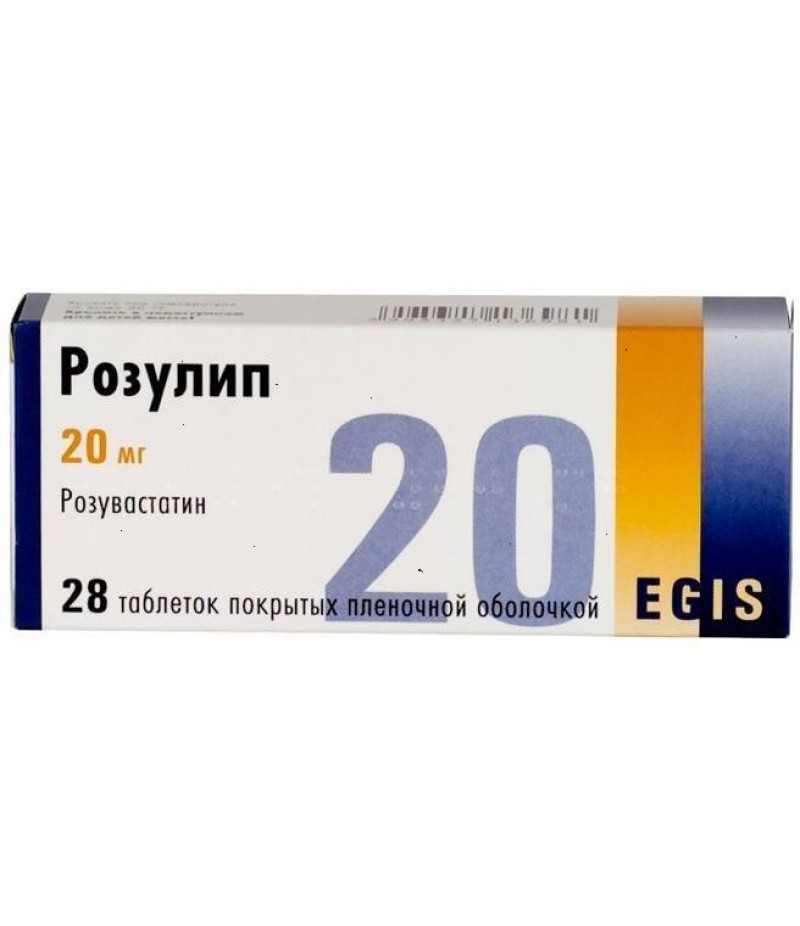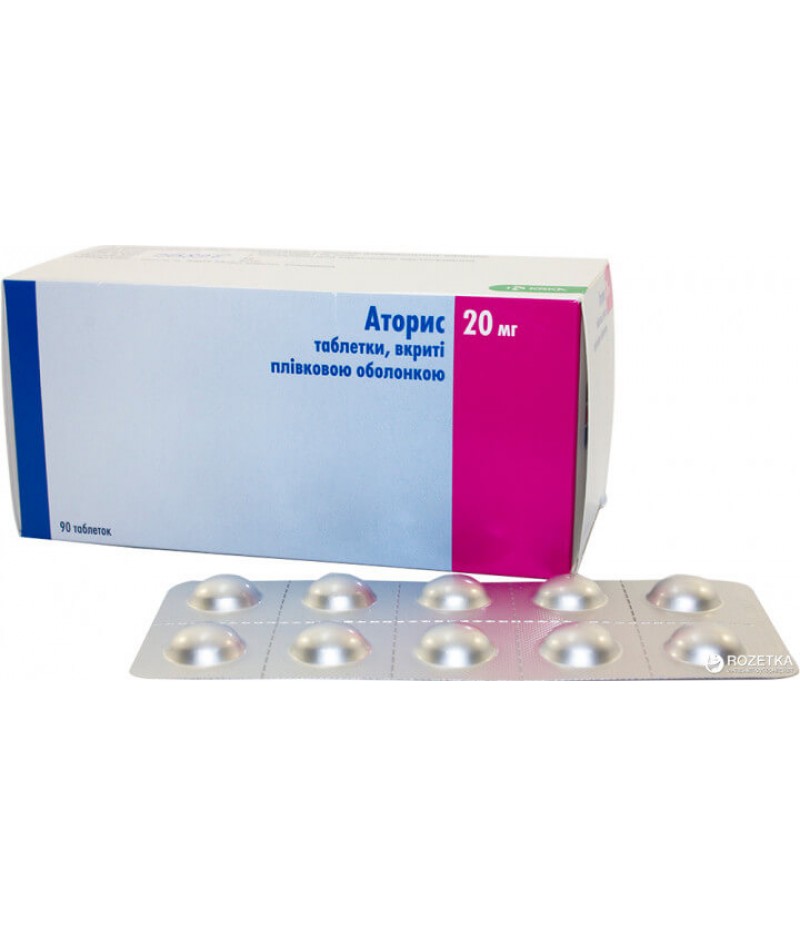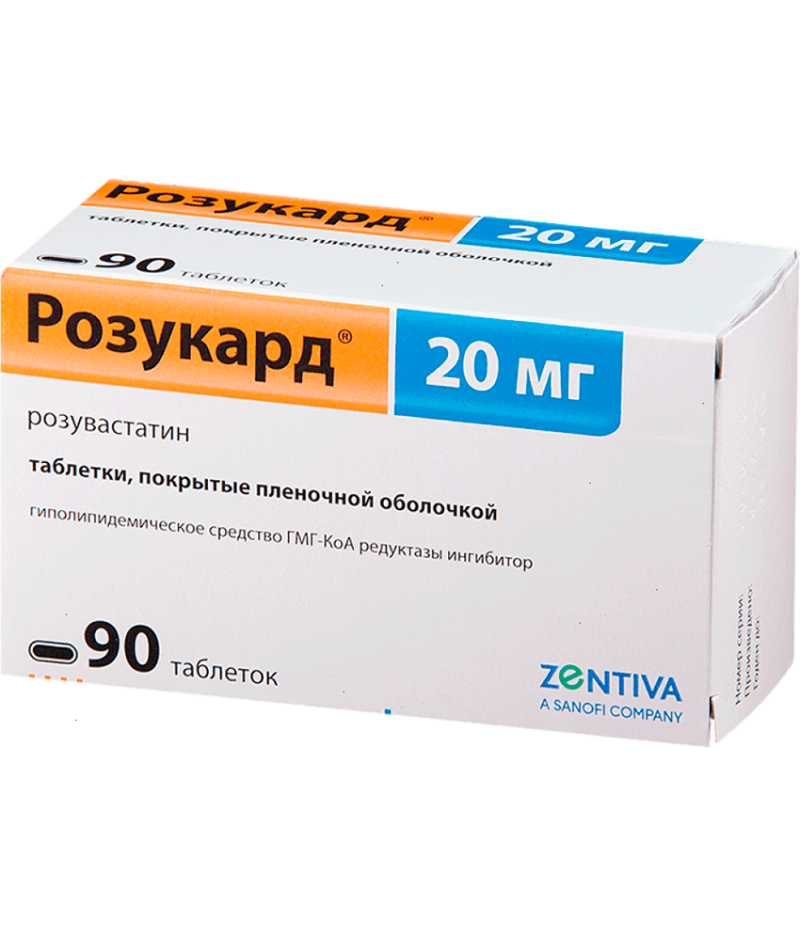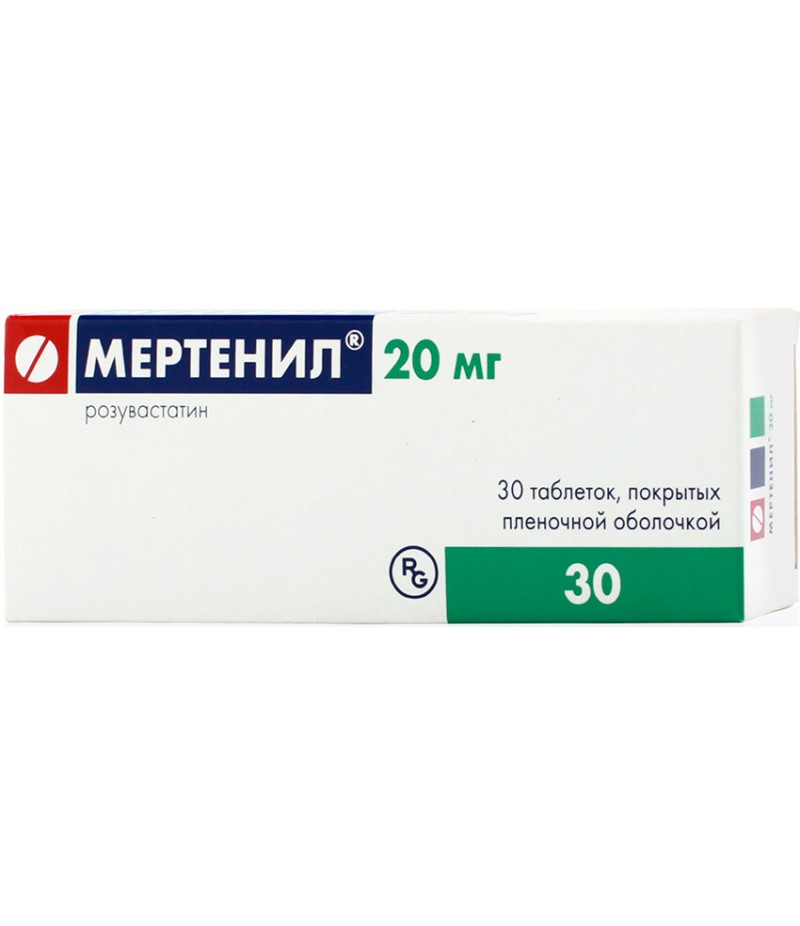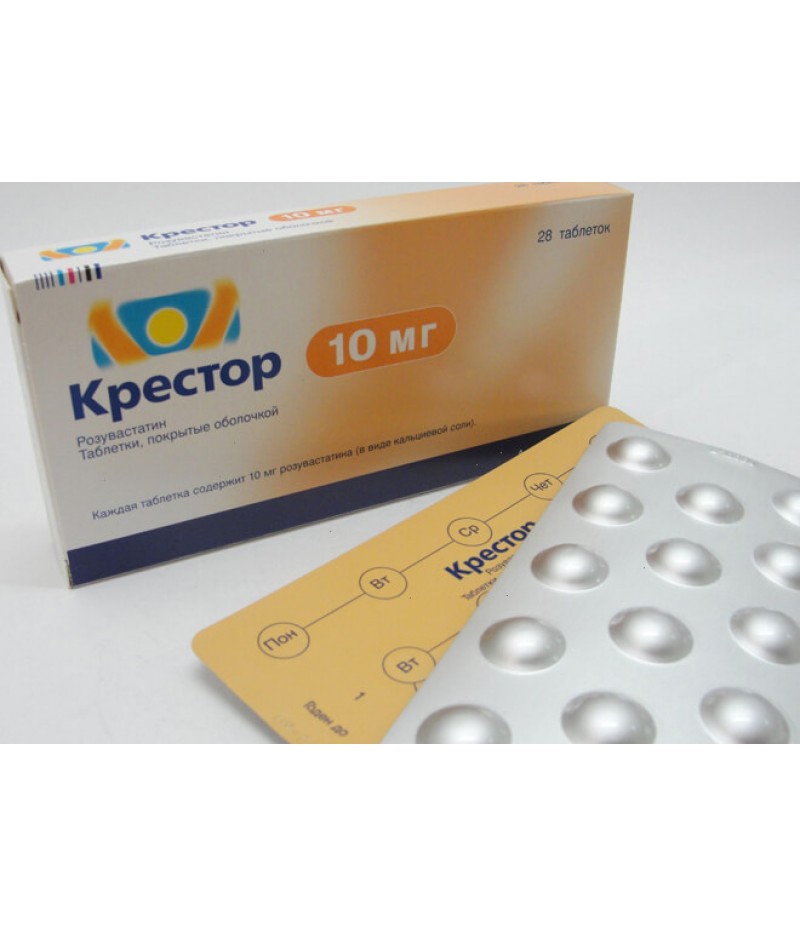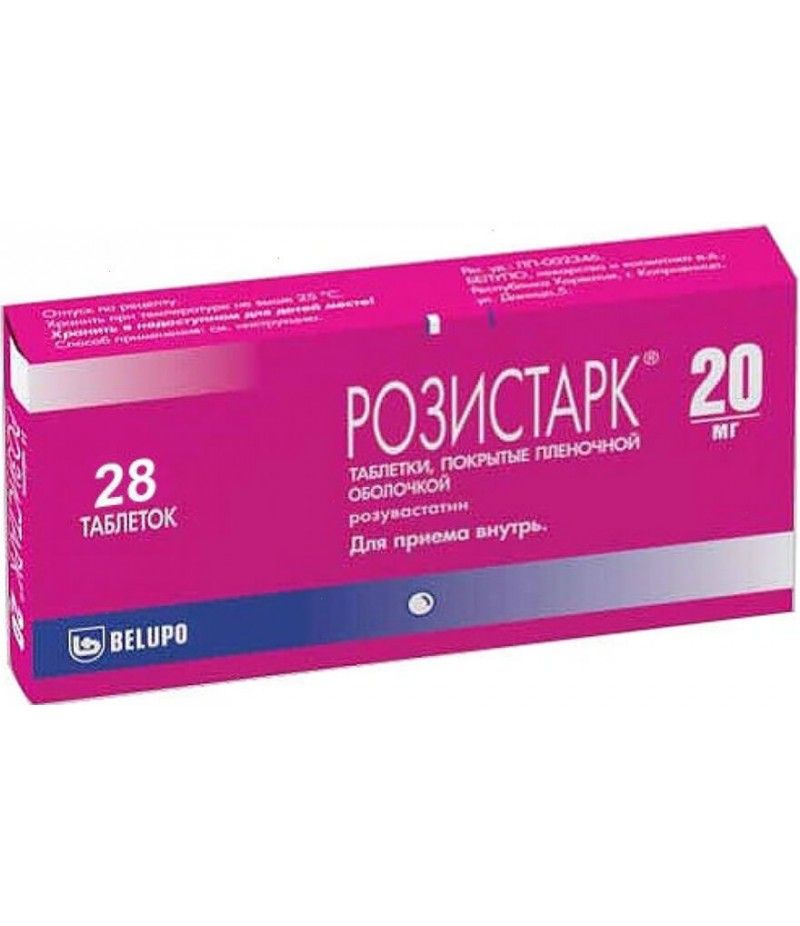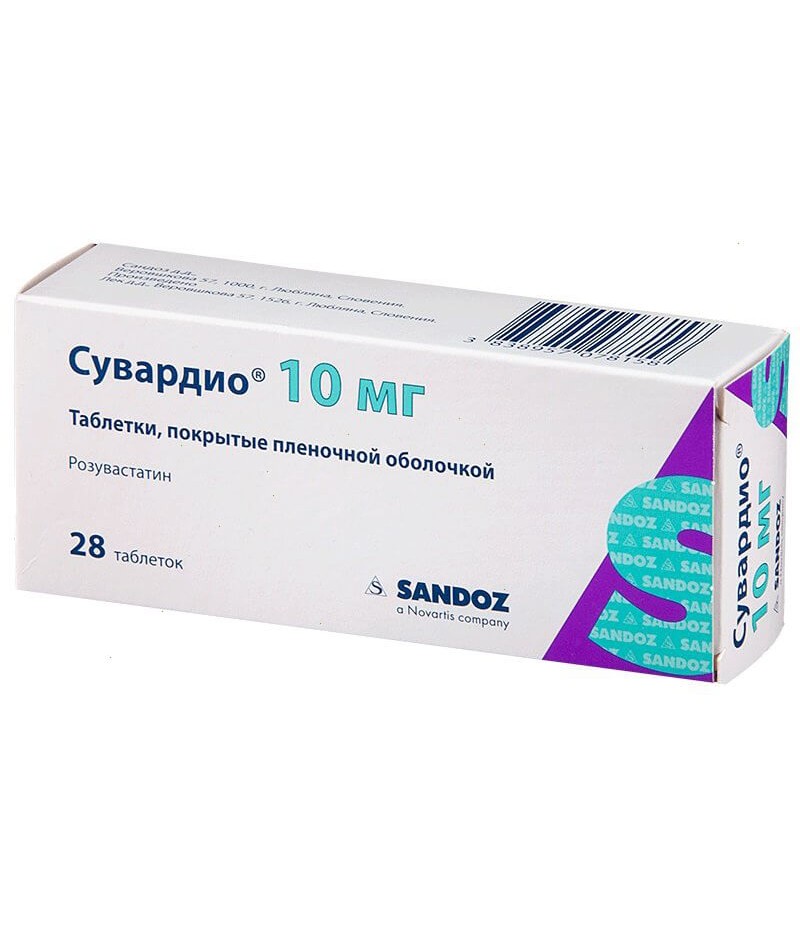Rosulip tabs 20mg #28
- $52.47
- 2 or more $51.50
- 3 or more $49.99
- Availability:In Stock
Rosulip user manualReed more and buy Rosulip on this pageCompositionDepending on the dosage, the Rosulip tablet may contain 5.34 mg, 10.68 mg, 21.36 mg or 42.72 mg of rosuvastatin zinc, which is equivalent to 5 mg, 10 mg, 20 mg, 4..
Tags: tabs, weight loss
Rosulip user manual
Reed more and buy Rosulip on this page
Composition
Depending on the dosage, the Rosulip tablet may contain 5.34 mg, 10.68 mg, 21.36 mg or 42.72 mg of rosuvastatin zinc, which is equivalent to 5 mg, 10 mg, 20 mg, 40 mg of rosuvastatin, respectively.
Auxiliary substances are ludipress, lactose monohydrate, povidone, crospovidone and magnesium stearate.
The film shell of Opadry II is white in color and consists of polyvinyl alcohol, titanium dioxide, macrogol and talc.
Form of issue
Rosulip is available in round biconvex shaped pills, white or almost white, a coating in the form of a film shell, on one side - engraving "E", on the other side - "591" (5 mg dose), "592" (10 mg dosage ), "593" (a dosage of 20 mg), "594" (a dosage of 40 mg). These pills are packed in blisters for 7 pieces, in a cardboard bundle there are 2, 4 and 8 blisters.
pharmachologic effect
Rosulip has a hypolipidemic effect.
Pharmacodynamics and pharmacokinetics
Rosuvastatin, as an active substance, is a selective competitive inhibitor of the enzyme HMG-CoA reductase, which catalyzes the conversion of 3-hydroxy-3-methylglutaryl CoA substance into mevalonate, the known precursor of cholesterol.
In connection with the increase in the number of LDL receptors on hepatocytes under the influence of rosuvastatin, the processes of absorption and catabolism of LDL are intensified, and also the suppression of synthetic processes of very low density lipoproteins in the liver. In addition, rosuvastatin has a clinically significant effect on such biochemical indicators as:
increases the concentration of cholesterol and the content of high-density lipoproteins (abbreviated Xc-HDL);
reduces the concentration of total cholesterol with triglycerides;
reduces the concentration of apolipoprotein B (APOB), triglycerides, and very low density lipoproteins (abbr. TG-VLDL);
increases the content of apolipoprotein A-I (APOA-I);
reduces high cholesterol with low-density lipoproteins (cholesterol, LDL-cholesterol, cholesterol and non-HDL cholesterol), cholesterol with very low density lipoproteins (Xc-VLDL), and their ratio, expressed as: Xc-LDL / Xs- HDL, commonly. Xs / Xs - HDL, Xc - non-HDL / Xc - HDL, APOB / APOA-I.
Usually, a therapeutic effect can be achieved in a week, and after 2 weeks of therapy an efficacy level of approximately 90 percent of the highest possible is achieved. To achieve maximum effect, you need 4 weeks of therapy, and then maintaining a regular reception.
The maximum plasma concentration of rosuvastatin for oral administration is reached after about 5 hours. The level of absolute bioavailability is up to 20% (increases in proportion to the dose). Rosuvastatin, undergoing intensive absorption by the liver, then acts in the synthesis of cholesterol and excreted X-LDL. About 90% of the active substance binds to proteins in the blood plasma (preferably with albumin).
Rosuvastatin metabolism: as a non-core substrate of isoenzymes (basic CYP2C9) cytochrome P450; the main metabolites are active N-desmethyl rosuvastatin, inactive lactone metabolites.
Almost 90% of the dose of unchanged rosuvastatin is eliminated through the intestine, 5% of the dose by the kidneys. The half-life is 19 hours, regardless of the dose increase.
Indications for use
type IIa according to Fredrickson classification of primary hypercholesterolemia, type IIb of mixed hypercholesterolemia (as a supplement to the diet);
in combination with diet and other treatments that can reduce blood lipids (eg, LDL-apheresis) with hereditary homozygous hypercholesterolemia;
type IV according to Fredrickson's classification of hypertriglyceridemia as a supplement to the diet;
in combination with diet and therapy, reducing the level of obshch. Xc, Xc-LDL to slow progressing atherosclerosis;
for the prevention of various cardiovascular complications, including: myocardial infarction, stroke, arterial revascularization without clinical manifestations, but with an increased risk of developing coronary heart disease, in the presence of risk factors such as hypertension, low HDL-C, smoking, presence in family history of early development of ischemic disease.
Contraindications
hypersensitivity to the components of Rosulip;
active phase of liver diseases, including persistent increase in serum transaminase activity;
severe functional disorders of the kidneys, with the clearance of creatinine up to 30 ml per minute;
Myopathy and predisposition to myotoxic complications;
therapy with ciclosporin;
women during pregnancy and lactation;
age group up to 18 years;
in connection with the content of lactose, a contraindication is its intolerance, a deficiency of the enzyme - lactase, including glucose-galactose malabsorption.
This drug is used with caution in the presence of the risk of developing myopathy or rhabdomyolysis, renal failure, liver disease in history, with sepsis, hypotension, hypothyroidism.
In addition, Rosulip is being treated with caution in patients who drink alcohol excessively, over 65 years of age, in an Asian race using fibrates with increased plasma concentration of rosuvastatin, extensive surgery or trauma.
Side effects
The therapy with rosuvastatin may cause undesirable events, however, light and transient side effects were predominantly recorded, where the frequency of occurrence classification was reduced to such groups as: often (≥1 / 100 - <1/10); infrequently (≥1 / 1000 - <1/100); rarely (≥1 / 10000 - <1/1000); very rarely (less than 1 case per 10000).
As with other HMG-CoA reductase inhibitors, the incidence of adverse reactions is related to the dose value. Adverse reactions may occur from the side of the following systems and organs:
Immune system: Hypersensitivity reactions and angioedema often occur.
Nervous system: "often" were recorded headaches, dizziness; very rare cases of polyneuropathy, memory loss.
Digestive system: "often" there were constipation, nausea, abdominal pain; infrequently - insignificant, asymptomatic, transient increased activity of hepatic transaminases; cases of pancreatitis are rare; does not specify the incidence of diarrhea; very rarely - jaundice and hepatitis.
Skin and subcutaneous structures: infrequent skin itching, rash and hives; the frequency of the Stevens-Johnson syndrome is not specified.
Musculoskeletal system: "often" was observed myalgia; rarely - myopathy (including myositis), rhabdomyolysis with or without acute functional kidney failure; very rarely recorded arthralgia.
The urinary system: a dose of 10-20 mg in almost 1% of patients and a dose of 40 mg in 3% of patients caused proteinuria; "Very rare" hematuria was recorded.
Respiratory organs: cough, shortness of breath.
Fluctuations in laboratory indicators: an increase in the content of glucose, bilirubin, the enzymatic activity of GGTP, APF.
Among others: "often" - asthenia, as well as possible functional disorders of the thyroid gland.
Instructions for using Rosulip (Method and dosage)
Tablets are prescribed to be taken orally inside. It is not recommended to chew or grind - it is necessary to swallow whole and drink with water! There is no clinical dependence on time of day and meals.
Instructions for use Rosulip implies compliance with a diet with low cholesterol throughout the course of treatment. Moreover, the dose of the drug is selected individually taking into account the indications, therapeutic response to treatment, current recommendations regarding the target level of lipids.
The standard scheme and features of Rosulip treatment for different groups of patients:
The initial dose of 5-10 mg for once a day, which if necessary after 4 weeks. can be increased.
After 4 weeks of taking a dose that exceeds the initial one, it is subsequently increased to 40 mg in patients with severe or familial (in history) hypercholesterolemia who have a high risk of developing cardiovascular complications (under the close supervision of a specialist).
Patients over 65 years of age are prescribed an initial dose of up to 5 mg, in the future, a dose change due to age is not required.
In the presence of moderate impairment of kidney function (creatinine clearance to 60 ml / min), predisposition to myopathy and for people of Asian race - the initial dose is 5 mg, however, the dose of 40 mg is contraindicated.
Increase in the dose after 2-4 weeks of therapy should be accompanied by monitoring of lipid metabolism and if necessary - dosage correction is performed.
Overdose
When taking over doses of rosuvastatin, symptomatic treatment should be performed, because there is no specific antidote for today, and the success of hemodialysis is unlikely. In addition, it is necessary to carry out activities aimed at maintaining vital functions, recommended monitoring of serum CFC and liver function.
Interaction
With Cyclosporin AUC, rosuvastatin rises on average by seven times than in healthy volunteers, in addition, the plasma concentration of rosuvastatin rises elevenfold, and Cyclosporine does not change.
With antagonists of vitamin K (for example, Warfarin) at the beginning of Rosulip therapy, or with an increase in the dose of the drug, PV and MHO may increase. Abolishing Rosulip or lowering the dose may result in a decrease in MHO, so MHO control is necessary.
The combination of rosuvastatin with gemfibrozil and lipid-lowering agents can lead to an increase in twofold the maximum plasma concentration and AUC of rosuvastatin.
With Ezetimib, pharmacodynamic interaction and the development of side effects are possible.
With protease inhibitors, a significant increase in the exposure of rosuvastatin is possible.
With antacids, a decrease in the plasma concentration of rosuvastatin is approximately 50%.
With Erythromycin, a decrease in AUC of rosuvastatin by almost 20% and Cmax by 30%, is probably due to increased intestinal motility under the action of Erythromycin.
With oral contraceptives and during hormone replacement therapy, the AUC of ethinylestradiol (by 26%) and norgestrel (by 34%) increases.
Joint use of drugs containing rosuvastatin with Itraconazole (an inhibitor of the isoenzyme CYP3A4) leads to an increase in the AUC of rosuvastatin by approximately 28%, which is a clinically insignificant reaction.
Storage conditions
Temperature not more than 30 ° Celsius.
For security reasons, restrict access to young children and pets.
Shelf life - 3 years.
Reviews about Rosulip
Reviews about Rosulip are few, but those who took this lipid-lowering drug, talk about its effectiveness with a small list of side effects, also noted the convenience of admission, since there is no dependence on time of day and meals.

